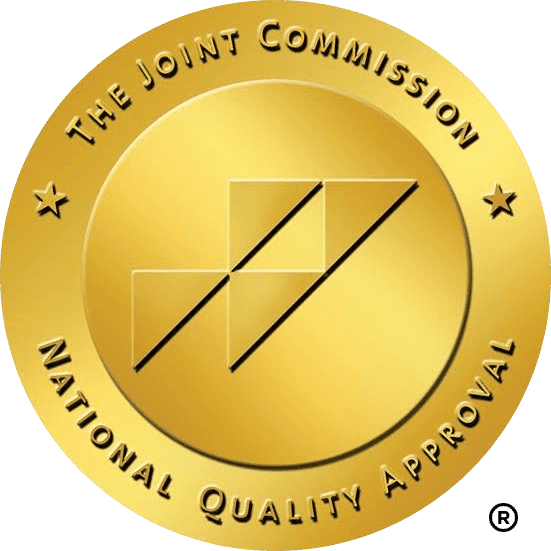Is your teen’s world feeling smaller—shrinking to the size of a smartphone screen?
The Impact and Effects of Social Media on Teens
For many parents, it’s tough to watch as social media slowly takes over their teen’s life ultimately becoming a social media obsession. Platforms like TikTok, Instagram, and Snapchat promise endless connection. Yet, in reality, they often pull teens further away from the world around them.
The Effect of Social Media on Family Life
As our teenagers spend more time on their mobile devices they become less interested in participating in family activities and become more withdrawn. This is deeply troubling. Technology addiction and social media obsessions affect teen’s mental health, their emotional well-being, and family relationships.
In this article, we’ll explore:
- The alarming ways social media affects teen mental health, brain development, and sleep.
- Key warning signs that your teen may be slipping into social media addiction—and how this addiction can disrupt their daily life.
- Practical strategies you can use to guide your teen toward healthier online habits.
- Next steps to take if you suspect social media is negatively impacting your teen’s mental health.
If you’re worried about social media’s impact on your teen, you’re not alone. Many parents share this worry. However, don’t lose hope. With the right insights and tools, you can help your teen develop healthier digital habits and help them stay grounded in the real world.
Parenting in the Age of TikTok and Instagram
Social media platforms gained popularity with teenagers over ten years ago when Facebook and Twitter began attracting both adults and kids with the promise of connecting online. Before that, our communication was limited to email, messaging apps, or chatrooms.
Today, platforms like TikTok, Instagram, and Snapchat are how teens interact with each other, creating unimagined challenges for parents. As Facebook, Twitter, Instagram and TikTok allowed users to post, like, dislike, and comment on pictures and videos, email and messaging apps took a back seat to this new form of communication.
Teenage Social Media Obsession
Today, the teen social media obsession epidemic focuses on TikTok, Instagram, and Snapchat but these are not the only platforms teens use. Since 2020, most teens have been accessing these platforms on their smartphones instead of laptops or iPads.
Why Smartphones Fuel Social Media Addiction
Smartphones make it easier for teens to access their accounts at any time, thus contributing to social media overuse and teen social media addiction. While these social media platforms transformed how teens interact, they also created challenges for parents that were once unimaginable.
The Hidden Dangers Teens Face Online
There are so many hidden risks online! Think about it: secret languages like emojis and slang, buying drugs, bullying, and even predators. It’s nearly impossible to protect teens from these negative influences, leaving parents feeling powerless.
The constant exposure to likes, comments, and social validation is taking a toll on teens’ mental health. It impacts self-esteem and creates feelings of inadequacy as teen’s worry about their posts, comments and emojis their followers post. Hurtful comments create anxiety, stress and increase self-doubt.
Ultimately, the overuse of technology affects emotional regulation and hampers cognitive development (lack of focus and poor decision making.) Here’s a closer look at how these platforms are affecting today’s teens.

From Scrolling to Struggling: The Mental Health Impact of Teen Social Media Use
Social Media Use Statistics for Teens
Here is a breakdown of the percentage of U.S. teenagers who report visiting or using the following sites almost constantly:
- Both male and female teens spend 17% of their time on TikTok and 16% of their time on YouTube.
- Teen girls spend 22 percent of their time on TikTok; teen boys spend 12 percent of their time on TikTok
- More teen boys than teen girls spend more time on YouTube
- Teens aged 13 and 14 spend 18 percent of their time on TikTok
- Teens aged 15-17 spend 16 percent of their time on TikTok
- Facebook is the least popular social media platform among U.S. teens.
Parents often ask us about social media’s effect on teen mental health, brain function. They also ask what signs of social media addiction they should watch for.
| How Discord Fits into Teens’ Social Media UseDiscord’s on the rise, especially for teen boys. While TikTok and YouTube still reign supreme, Discord’s becoming a go-to spot for teens to hang out online. It began a place for gamers. However, today it’s like a giant virtual clubhouse. Discord offer teens tools to chat, share funny videos, and find communities that match their interests. Voice and text chat make it feel like they’re actually hanging out with their friends, which can be super engaging. But that also means it can be easy to lose track of time. Parents, keep an eye on Discord – it might be adding to your teen’s screen time more than you think! |
Technology Addiction or Social Media Addiction – What’s the Difference?
- Technology addiction includes behaviors like gaming, gambling, and browsing, often used to escape reality.
- Social media addiction, which is a subset of technology addiction, is driven by teens’ need for validation and belonging.
Technology addiction, or device addiction involves the excessive use of digital devices like smartphones, computers, or gaming consoles. Addicted teens may game, gamble, watch videos, shop, or browse excessively—often as a way to escape reality or seek stimulation.
How Technology Addiction Affects Teen’s Health
Technology addiction can lead to physical health issues like eye strain and carpal tunnel syndrome, as well as behaviors linked to social media addiction (discussed below). It can potentially lead to issues such as ADHD, adolescent anxiety, depression, financial problems and risky behaviors, including increasing the risk of suicide.
While social media addiction refers to the excessive use of social media platforms, it is still part of a technology addiction. This silent addiction often has a more severe impact on mental health, leading to self-esteem issues, depression and anxiety. Sadly, many parents miss the signs until it’s too late.
Is Social Media Rewiring Teen Brains? Understanding the Cognitive Effects
Cognition refers to the brain’s ability to perceive and comprehend incoming stimuli. Specifically, this includes perceiving and understanding the world around us (through conversations, sights, sounds, smells, and tactile sensations, etc.)
Cognition also includes:
- Learned skills in problem-solving
- Remembering
- Making rational decisions
Experts tell us that technology addiction leads to changes in the brain’s gray and white matter, potentially affecting cognitive function. This results in shortened attention spans, impaired executive functioning, reduced social skills, and career readiness.
Compared to previous generation, studies show that the more time our teens spend on devices and social media, the worse they perform on memory and problem-solving skills related tasks.
Social Media as a Barrier to Teen Behavioral Health
Deemed the Google effect, these cognitive issues we’ve been discussing are affecting today’s teens. For instance, teens are not interested in memorialization or even learning. After all, why memorize something when you can Google it or ask someone on social media for the answer?

Why Real-World Interaction is Vital for Teen Mental Health and Development
The Importance of Face-to-Face Interaction
It’s well known that the best way for adolescents to develop essential life skills is by gaining valuable insights through interacting with others. Unfortunately, excessive social media use has replaced these opportunities with online engagement. As a result, endless scrolling and online activities have replaced family time, hobbies, and simple conversations.
Parents that contact us for help often shared their fears and frustrations about their kids’ incessant scrolling on their mobile devices. They tell us how worried they are about their teens prioritizing the virtual world over real-life experiences.
It’s heartbreaking for parents to feel powerless, as the tactics parents use to try and help their teen’s break free from their technology addictions often don’t work, and speaking to their kids often becomes contentious and turns into conflict.
〈 Key Takeaway 〉Face-to-face interaction is crucial for your teen’s brain development, problem-solving abilities, and overall emotional health. Excessive social media use replaces these vital opportunities for growth. |
The Behavioral and Mental Health Connection
Social media’s impact on memory goes beyond the “Google effect.” The constant pressure for peer approval and validation is linked to rising rates of depression, anxiety, and low self-esteem among teens.
Depressed kids (as well as depressed adults) do not recall positive events as well as they recall negative events. As a result, the brain becomes “trained” to retain only memories that a teen views as hurtful to their self-esteem and self-identity. Remembering criticisms only worsens depression and intensifies a teen’s desire to get as many “likes” as possible on social media for a quick boost to their self-esteem.
These mental and emotional struggles can manifest in other areas of your teen’s life—particularly sleep. With their minds constantly racing, keeping up with social media, and battling feelings of anxiety or self-doubt, it’s no wonder many teens are losing precious hours of rest. Let’s take a closer look at how social media is contributing to sleepless nights.
~Surgeon General Vivek Murthy |
 Sleepless Nights, Scrolling Screens: How Social Media Disrupts Teen Sleep
Sleepless Nights, Scrolling Screens: How Social Media Disrupts Teen Sleep
- Teens need at least nine hours of sleep each night for healthy cognitive development.
- The fear of missing out (FOMO) keeps teens scrolling late into the night, causing anxiety and sleep deprivation.
It’s exhausting for parents to see their teen struggle with sleep, knowing that social media is the culprit. It’s perfectly normal for parents to feel frustrated when everything they try fails and solutions just seem out of reach. The good news is that there are ways to help your child overcome their social media obsession.
The Science is Clear: Social Media is Stealing Your Teen’s Sleep
This isn’t just about research—it’s about your teen struggling to stay awake in class, feeling anxious despite exhaustion, and still unable to sleep. Insomnia is becoming a growing issue for teens. Here’s what experts say:
- More scrolling, less sleeping: Studies show a clear link between social media use and poor sleep.
- Bedtime scrolling = daytime struggles: Teenagers who spend time scrolling social media experience fatigue and focus issues in school the next day.
- Caught in the addiction cycle: Teen anxiety and endless scrolling make it hard to put the phone down, causing them to stay awake long after bedtime.
- FOMO takes over: The fear of missing out (FOMO) keeps teens glued to their screens, even when their bodies are screaming for rest.
Sleepless nights and falling grades, the impact of Social media on teen Sleep and School Performance
The AASM recommends that teenagers aged 13-18 should sleep 8-10 hours per 24 hours on a regular basis to promote optimal health.
The negative consequences of teenagers not getting enough sleep:
- Behavioral problems: Lack of sleep triggers mood swings and impulsive behavior, making it harder for teens to manage their emotions and interact positively with others.
- Sleep depravation: Making teens feel tired, irritable, and unable to focus during the day, results in anger management issues.
- Weakened immune system: Increasing their susceptibility to illness, higher risk of obesity, diabetes, hypertension and depression.
- Poor school performance: Difficulty concentrating, falling asleep in class, tardiness, skipping classes and even skipping school altogether.
- High risk of accidents and injuries: Drowsy driving, impaired judgement and coordination, lower reaction times, poor decision-making which leads to engaging in risky behaviors. (drugs or alcohol misuse, unsafe behaviors)
With smartphones granting 24/7 access to social media, it’s all too easy for teens to fall into the trap of endless scrolling and sacrifice sleep for online engagement.
〈 Key Takeaway 〉Lack of sleep due to social media overuse leads to poor academic performance, weakened immune systems, and increased irritability and impulsive behavior. |
The Tragic Reality of Social Media’s Impact: Molly’s Story
Molly Russell was a bright, bubbly 14-year-old who loved horses and dreamed of becoming a veterinarian. But behind her cheerful facade, a dark storm was brewing in the digital world. Sadly, Molly tragically took her own life after being exposed to thousands of social media posts related to depression, self-harm and suicide.
During the inquest, the coroner said,
“She died from an act of self-harm while suffering from depression and the negative effects of online content”~Mr. Walker, the senior coroner for north London.
Her death prompted a national outcry about the dangers of unregulated social media use for teens. Molly’s tragic story serves as a stark reminder how social media can affect a child who is struggling with depression and the need for parents to intervene in the dangers of social media.
Citation: BBC, Molly Russell Inquest (2019)
The Silent Struggle: Sarah’s Battle with Social Media and Sleep
For Sarah, a 15-year-old high school student, staying up late to scroll through social media seemed harmless at first. But soon, her grades began to plummet, and her once-energetic personality faded. Her academic performance suffered due to her exhaustion during school hours and her absenteeism.
Sarah’s experience highlights the insidious way social media can disrupt sleep patterns and have a domino effect on a teen’s overall well-being. In a 2022 study by the American Academy of Pediatrics, researchers found that teens who spent over 4 hours daily on social media were more likely to suffer from insomnia, leading to poor academic performance and absenteeism.
Citation: AAP, 2022 Study on Adolescent Sleep Patterns
Recognizing and Addressing Teen Social Media Addiction: Impact on Daily Life and Beyond
What is Social Media Addiction?
Compulsive and excessive use of social media platforms, despite negative consequences like anxiety, low self-esteem, and relationship issues.
How to Recognize the Signs of Teen Social Media Addiction In Your Teen
When it comes to identifying social media addiction in your teen, start by answering these questions, these are the key signs parents need to look for:
- Is your teen neglecting their responsibilities such as:
- Falling behind in school?
- Ignoring household chores?
- Spending all their free time on social media?
- Is your teen defensive and or angry?
- Do they overreact to simple requests?
- Are they easily triggered when you set limits on their smartphone use?
- Is your teenager withdrawing from real life into a virtual world?
- Do they avoid family gatherings or spending time with friends?
- How much time do they spend alone?
- How many hours are they spending online per day?
- Is your teen exhibiting aggressive behavior?
- Do they lash out when you attempt to talk to them about their time online or try to restrict access to their devices?
- How do they respond when you threaten to take away their smartphone?
Kids addicted to social media often hide what they are doing online or act secretive. They refuse to answer questions about what they post on TikTok, who they follow on Instagram, or what they discuss on Discord.
How Parents Can Approach the Conversation
To a parent, these questions are often curiosity and asking the questions seems harmless. However, to a teenager addicted to social media or technology, asking about their social media use may trigger anxious feelings bordering on panic and confusion.
Why Teens Act Defensively About Social Media Use
Mostly because teens act defensively but mostly because they may be terrified of losing access to their accounts or having a parent discover their online persona since they know their parents will disapprove.
〈 Key Takeaways 〉If your teen shows signs of social media addiction, like withdrawal or neglecting responsibilities, it’s important to set boundaries and encourage offline activities to restore balance. Teen Online persona: How your teenager present themselves online and shares their interests. The online communities they participate in, and the image they want to portray in the digital world. Online personas often differ from real life. Teens frequently experiment with different online personas (identities) based on the platforms they use as they figure out who they are. |

5 Practical Steps Parents Can Take to Improve Their Teen’s Cognitive Health and Protect their Teens from Social Media Overload
1. Setting Social Media Boundaries: A Crucial First Step
One of the most effective ways to support your teen’s cognitive development is to set clear and consistent boundaries around social media use.
Practical Actions:
- Work with your teen to develop a daily schedule that includes dedicated times for schoolwork, hobbies, physical activities, and social media use. This structure reduces impulsive social media use and promotes responsibility, improving time management and preventing overuse.
- Incorporate regular “Social Media Detox Days.” These designated days can help your teen regain focus and emotional balance, encouraging them to participate in other face-to-face activities that promote real-world problem-solving and critical thinking.
- Designate technology-free zones. For example, areas like the dinner table or bedrooms should be screen-free. Creating opportunities for family time during meals or before bed without the distractions of devices is important. Establishing boundaries and technology-free zones reinforces family connections and helps teens develop healthier habits around technology use.
- Set specific time limits for social media use. Make sure, social media doesn’t interfere with other priorities like sleep, schoolwork, or family time. Time limits help prevent overstimulation and give the brain time to rest, thus improving sleep quality and reducing anxiety. Taking a break can help reset their brain and promote better emotional regulation.
Why this works:
Healthy Limits: Protecting Developing Brains
- Structure and boundaries help reduce impulsive social media use and promote responsibility, improving time management and preventing overuse.
- Detox days encourage your teen to participate in other face-to-face activities that foster real-world problem-solving and critical thinking.
- Technology-free zones reinforce family connections and help teens develop healthier habits around technology use.
- Time limits prevent overstimulation, improve sleep quality, reduce anxiety, and promote better emotional regulation.

2. Teach Mindful Media Consumption and Media Literacy Plan:
In addition to setting time limits, teaching media literacy and promoting conscious consumption can help your teen develop a healthier relationship with technology.
Practical Action:
- Engage in open discussions. Talk to your teen about how social media can influence their perceptions and shape their beliefs. Help them understand that not everything they see online is true or realistic.
- Encourage critical thinking. Teach your teen to question the credibility of information they encounter online and evaluate its sources. Guide them to make informed choices about what to believe and share.
- Foster conscious consumption. Help your teen become more mindful about how they consume information online. Discuss the difference between helpful and harmful content and encourage them to seek out positive and enriching experiences.
- Develop media literacy. Talk to your teen about the different types of messages they see on social media, including advertising, sponsored content, and potentially harmful content. Help them understand the motives behind these messages and how to critically analyze them.
Why it Works:
Building Resilience: How Media Literacy Can Protect Teen Mental Health
- Empowers teens to make informed choices. By developing critical thinking and media literacy skills, teens can better navigate the complex online world and make choices that align with their values.
- Reduces the emotional impact of social media. Teaching teens to question and analyze online content helps them develop healthy skepticism, reducing their vulnerability to negative influences.
- Promotes conscious consumption. Encouraging mindful media consumption empowers teens to make intentional decisions about how they spend their time online, leading to better decision-making and emotional regulation.
- Fosters healthy online habits. Parents can help their teens develop a more balanced and positive relationship with technology by engaging in open conversations and providing guidance.
- It addresses the root of the problem. Instead of simply restricting access to social media, this approach empowers teens to become more discerning consumers of online content.
3. Prioritize Sleep for a Healthy Mind
Quality sleep is vital for teens’ cognitive development and overall well-being. However, the allure of social media often keeps them glued to their screens late into the night, disrupting their sleep patterns and impacting their ability to learn and thrive.
Practical Action:
- Establish a consistent sleep schedule: Set a regular bedtime and wake-up time, even on weekends, to help regulate your teen’s internal clock.
- Implement a digital curfew: Power off all devices at least one hour before bedtime. This minimizes exposure to blue light, which can interfere with melatonin production and make it harder to fall asleep.
- Create a relaxing bedtime routine: Encourage activities like reading, taking a warm bath, or listening to calming music to help your teen unwind and prepare for sleep.
Why it Works:
Fuel for Success: Prioritize Sleep for a Mind
- Boosts brainpower: Quality sleep improves cognitive function, memory, and concentration, which is essential for academic success and overall mental clarity.
- Enhances emotional well-being: Adequate rest helps regulate emotions and reduces anxiety and irritability, promoting a more positive outlook and better stress management.
- Protects physical health: Sleep allows the body to repair and recharge, strengthening the immune system and reducing the risk of various health problems.
4. Cultivate Mindfulness: A Path to Digital Detox
Mindfulness practices can be a powerful tool to help teens manage stress, improve focus, and develop a healthier relationship with technology.
Practical Action:
- Introduce mindfulness techniques: Encourage your teen to explore different mindfulness practices such as breathing exercises, meditation, or yoga. These practices can help them develop self-awareness and emotional regulation skills.
- Encourage “mindful breaks” during online activities. Suggest that your teen take short breaks every 20-30 minutes to check in with their body and mind. Simple practices like closing their eyes, taking a few deep breaths, or stretching can help them reset and refocus.
Why This Works:
Finding Inner Peace: Mindfulness as a Stress-Buster
- Reduces stress and anxiety: Mindfulness helps teens become more aware of their thoughts and feelings, allowing them to manage stress and anxiety more effectively. This can reduce their reliance on social media as a coping mechanism.
- Improves focus and attention: Regular mindfulness practice can enhance concentration and attention span, leading to improved cognitive function and academic performance.
- Promotes self-awareness: Mindfulness encourages teens to recognize when they’re feeling overwhelmed or overstimulated by online content, empowering them to make healthier choices about their technology use.
- Enhances emotional regulation: By developing the ability to observe their emotions without judgment, teens can better manage their feelings and avoid impulsive reactions.
Encouraging Offline Activities to Foster Real-World Problem Solving
5. Reward Positive Behavior: Celebrate the Offline World
Recognize and reward your teen’s efforts to engage in healthy activities and balance their digital life. Positive reinforcement can go a long way in establishing lasting habits.
Practical Action:
- Create a reward system: Set up a system where your teen earns points or privileges for completing offline activities, taking social media breaks, or demonstrating mindful technology use.
- Choose meaningful rewards: Focus on non-digital rewards that promote real-world engagement, such as:
- Extra time with friends or family
- Outings to favorite places or activities
- Pursuing a personal hobby or goal
- Choosing a special meal or treat
Why This Works:
Positive Reinforcement: Motivation is a Powerful Healer
- Positive Reinforcement: Celebrating their successes helps motivate teens to continue making healthy choices.
- Builds Intrinsic Motivation: Shifting the focus from screen time to real-life experiences can help teens rediscover the joy of offline activities and build intrinsic motivation to engage in them.
- Strengthens Family Bonds: Shared activities and experiences create opportunities for connection and strengthen family relationships.
When Practical Steps Aren’t Enough: Explore Therapeutics at Home
While the strategies we’ve discussed so far are effective in promoting healthier social media habits, sometimes teens may require additional support to address deeper emotional or psychological challenges related to their technology use.
In such cases, incorporating therapeutic approaches at home can be the answer. The techniques listed below can help teens become more self-aware, learn to manage their emotions, and help them develop a healthier relationship with technology.
Cognitive Behavioral Techniques (CBT)
Practical Action:
Help your teen challenge negative thoughts and behaviors related to social media use. Encourage them to ask reflective questions, such as:
- “Why do I feel the need to check this now?”
- “How does social media make me feel afterward?”
- “What are some alternative activities I could engage in instead?”
Why This Works:
- CBT techniques help reframe unhealthy thought patterns and behaviors, promoting self-awareness and healthier coping mechanisms.
Find a local therapist specializing in adolescent mental health and technology addiction. Discuss whether CBT is suitable for your child.
You may also consider working with a therapist or counselor that offers online therapy. This course of action is beneficial for teens who may be resistant to attending sessions.
Journaling Emotions
Journaling and self-reflection are at home CBT practices that can help a child explore their feelings and reflect on how they feel. It is an excellent practice in between therapy sessions.
Practical Action:
- Encourage your teen to journal about their emotions after using social media. Have them track when they feel happy, stressed, or anxious and reflect on whether social media contributed to those feelings.
Why This Works:
- Journaling can help teens identify patterns and triggers related to their social media use, fostering emotional intelligence and self-regulation.
Essential insights for Parents – Social Media and Mental health | |
〈 Key Takeaways 〉 | |
| ✅ | Teen Social Media Overuse: U.S. teens spend over 17% of their time on platforms like TikTok and YouTube, which impacts their brain development, mental health, and daily lives. |
| ✅ | Sleep Disruption: Social media use late at night is associated with poor sleep, leading to increased anxiety, depression, and poor academic performance. |
| ✅ | Addiction Warning Signs: Teens addicted to social media often withdraw from family, neglect responsibilities, and act out aggressively when their usage is challenged. |
| ✅ | What Parents Can Do: Experts suggest that setting boundaries and encouraging offline activities can help restore your teen’s cognitive health and emotional balance. |
| ✅ | Sometimes, Professional Intervention is Necessary: When social media addiction starts impacting your teen’s daily life and relationships. Turning Winds can provide the expert support your family needs. |
When Home Strategies Aren’t Enough: Finding Professional Support
While the strategies discussed here can be powerful tools in helping your teen develop a healthier relationship with technology, it’s important to recognize that sometimes, professional intervention may be necessary.
If you’ve tried setting boundaries but see no improvement, it may be time to seek professional help. At Turning Winds, we offer personalized therapies to help teens overcome social media addiction.
At Turning Winds, our team of experts is trained to address the psychological and emotional effects of social media addiction through personalized therapies. By acting now, you’re giving your teen the chance to break free from the damaging cycle before it worsens.
We offer a safe and supportive environment where teens can learn to manage their technology use, develop healthy coping mechanisms, and rediscover the joy of real-life connections.
Remember, you’re not alone in this journey. Reaching out for help is a sign of strength, not weakness.
Contact us today at 800-845-1380for a confidential consultation or request a callback and learn how we can help your family break free from the grip of social media addiction.
Your Questions, Answered: Navigating Social Media and Teen Mental Health
At what age should I allow my child to have social media accounts?
While most social media platforms require users to be at least 13 years old, it’s important to remember that age isn’t the only factor to consider. Every child develops at their own pace, and maturity plays a big role in how well they can handle social media challenges. Have an open conversation with your child about the risks and rewards of being online. Together, you can make an informed decision that feels right for your family.
- Improvement: Added a compassionate touch by acknowledging that every child is different and encouraged a dialogue, which fits the supportive tone of the article.
How can I monitor my teen's social media activity without invading their privacy?
It’s important to balance your teen’s privacy with their safety online. Here’s how you can monitor without overstepping:
- Foster open communication: Talk regularly about their online activity and any concerns you have.
- Set clear expectations: Agree on social media rules together, so your teen understands you’re not trying to control them but ensuring their safety.
- Use parental control apps: Discuss using parental monitoring tools with your teen for transparency, so they feel involved in the process.
What are some effective strategies for setting limits on my teen's social media use?
Setting limits is key to helping your teen balance their online life. Here’s how:
- No phones at meals or before bedtime: Make meals and bedtime technology-free times.
- Encourage offline hobbies: Help them discover activities they enjoy without screens.
- Lead by example: Show them you’re committed to a healthy balance by reducing your own screen time.
- Use screen time management tools: Apps and blockers can help limit social media usage without being invasive.
When should I seek professional help for my teen's social media addiction?
If social media use is affecting your teen’s relationships, school performance, or mental health, it may be time to seek help. Warning signs include:
- Withdrawal from family and friends.
- Falling behind on responsibilities.
- Defensiveness when asked about their social media activity.
Consider professional support, especially if you notice these patterns persisting. At Turning Winds, we specialize in helping teens regain balance and develop healthier digital habits.













